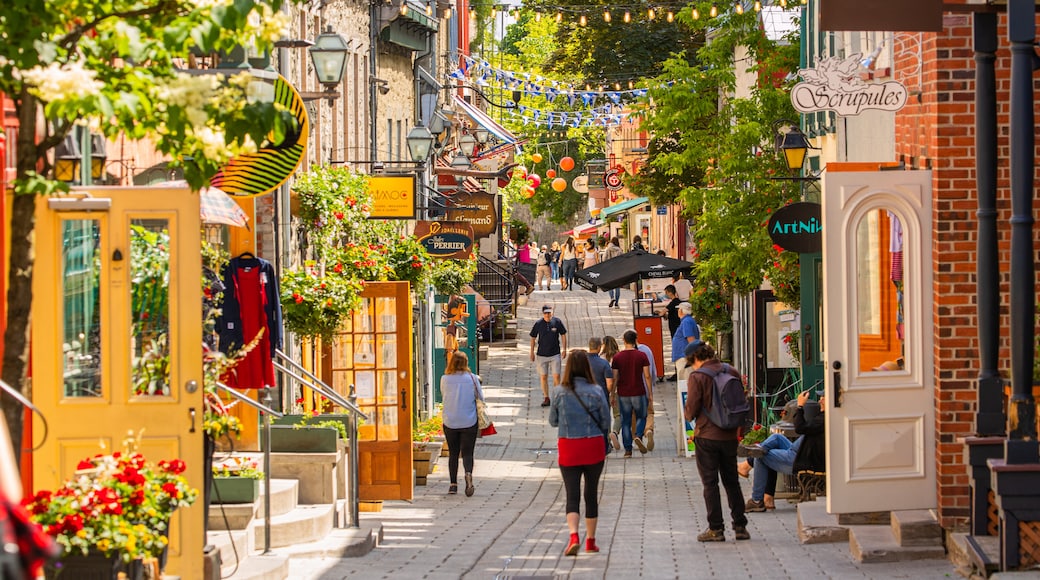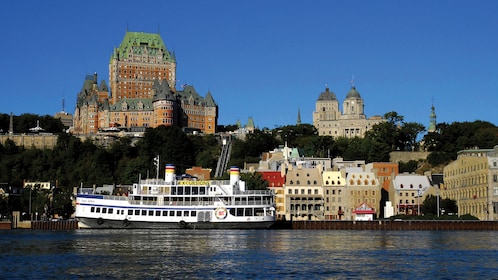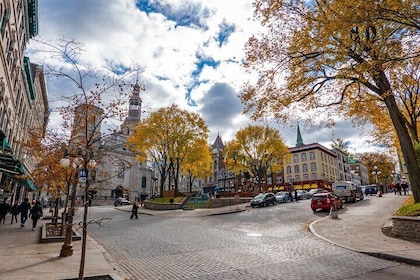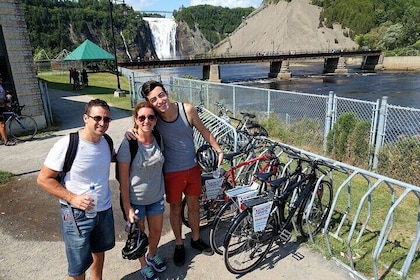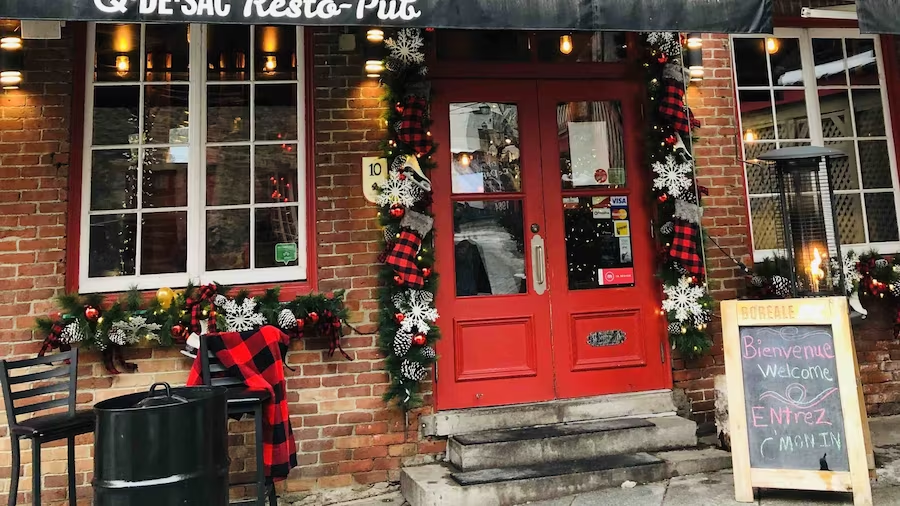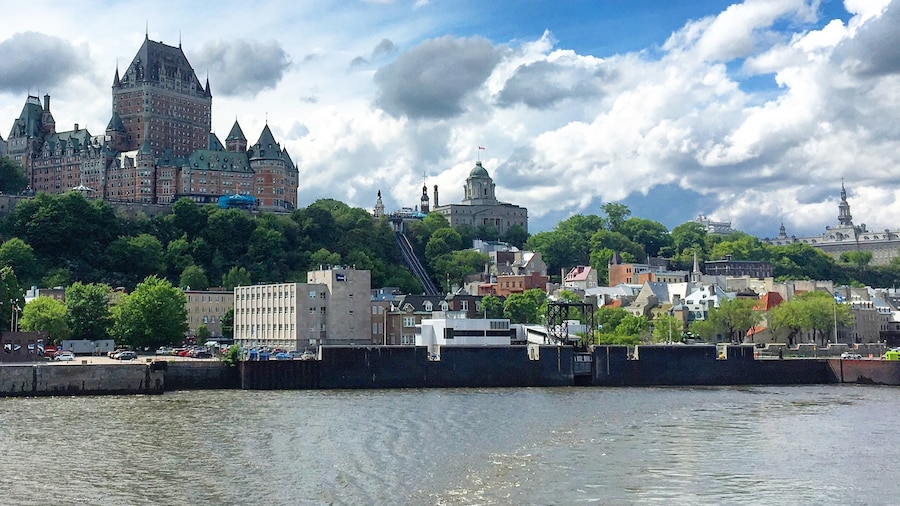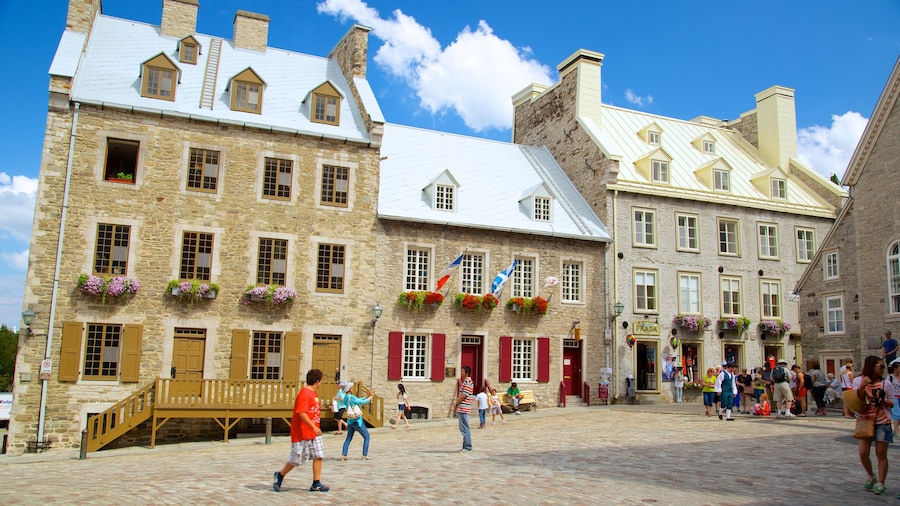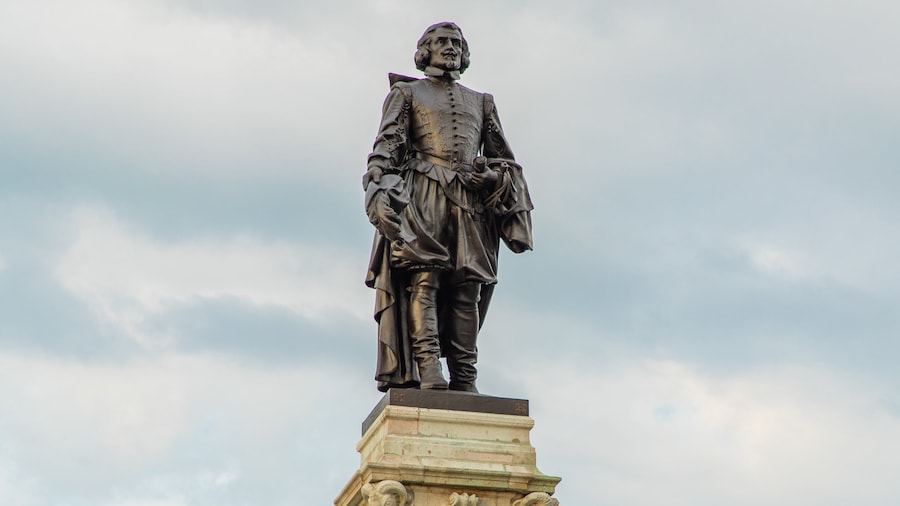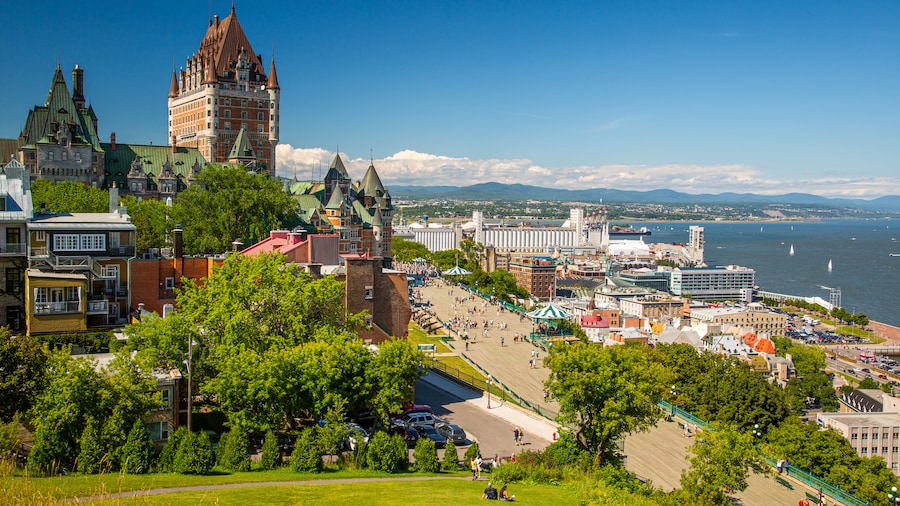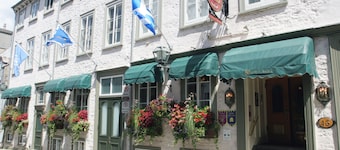The oldest commercial district in North America has a distinct European ambience and a interesting mix of boutiques and bistros.
One of the most famous neighbourhoods in Québec is a picturesque collection of narrow cobblestone streets with bistros, shops and art galleries housed in old stone buildings. Shopping is one of the principal reasons why people come to Petit-Champlain. Browse the handicraft boutiques that are noted for their leather, jewellery, clothing and decorative arts.
Climb the Escalier Casse-Cou, nicknamed the “Breakneck Steps” because of its steepness. The 59 steps are wedged between two sides of a street and lead up to Côte de la Montagne. The view from the top is well worth the climb, also at night when the area becomes a sea of lights.
Spend a few minutes exploring the detail of the trompe l’oeil mural on the wall of 102 Rue du Petit-Champlain. This massive outdoor work of art illustrates important events in the district’s history, such as bombardments and landslides. Pay attention to the windows with depictions of prominent figures from Québec’s history, including its founder Samuel de Champlain. The optical illusion created by the painting makes you feel like you can step straight into the scene.
Also drop in on number 16, a restored building which was once the home of the explorer Louis Jolliet who mapped the Mississippi River. The house contains the lower terminal of the cable railway that connects the Lower Town to the Upper Town.
Petit-Champlain is tucked beneath the cliffs that support Château Frontenac. A fun way to reach the area is via the staircase or cable railway from Dufferin Terrace. The neighbourhood is a pedestrianized zone and is best explored on foot. The nearest major public transport hub is Gare du Palais and city buses traverse the district. Metered parking is available in nearby streets.
You can explore the neighbourhood at any time, but bear in mind that the restaurants and stores have varying opening hours. To avoid the crowds, go earlier in the day or after dinner.

